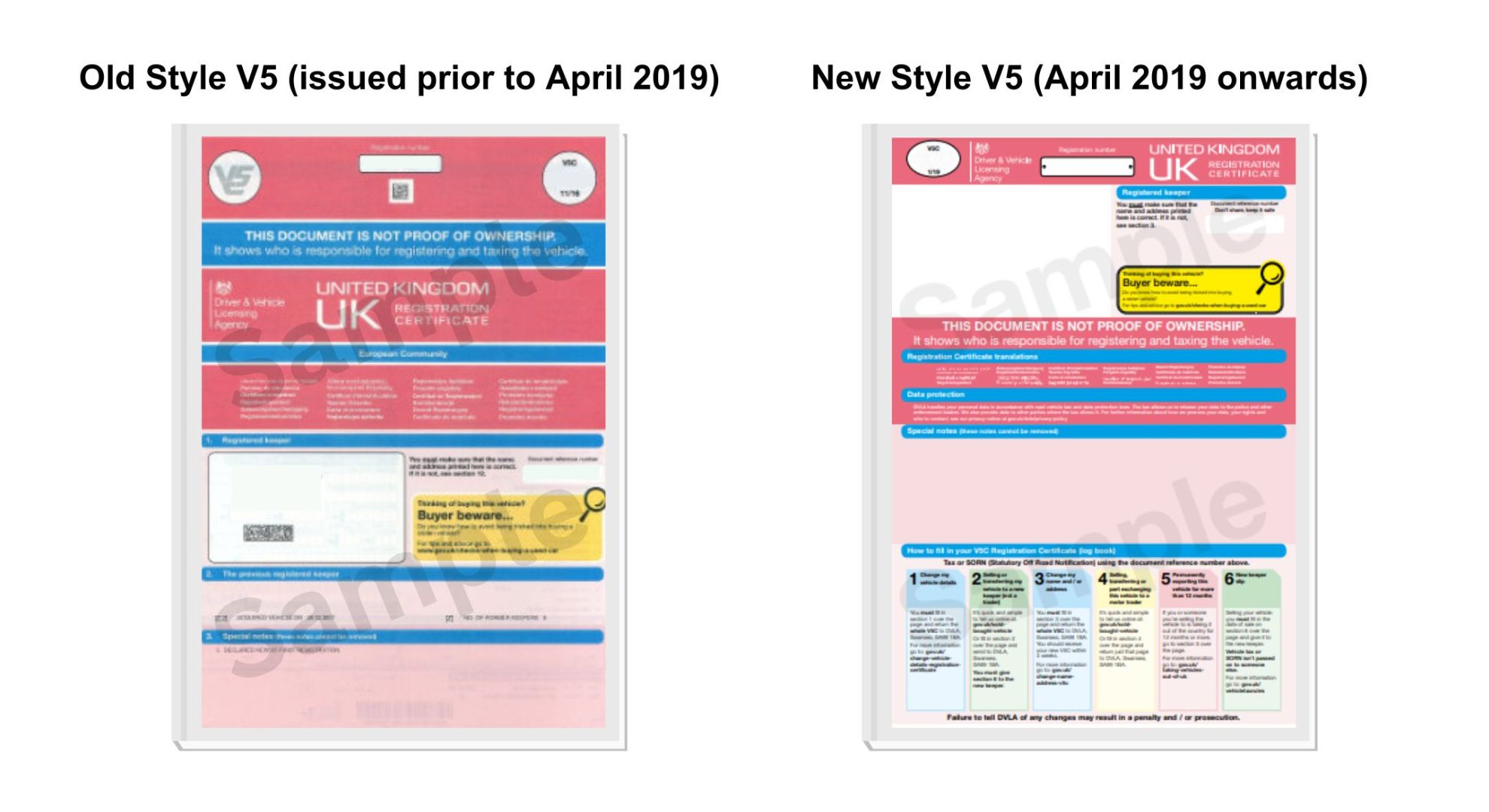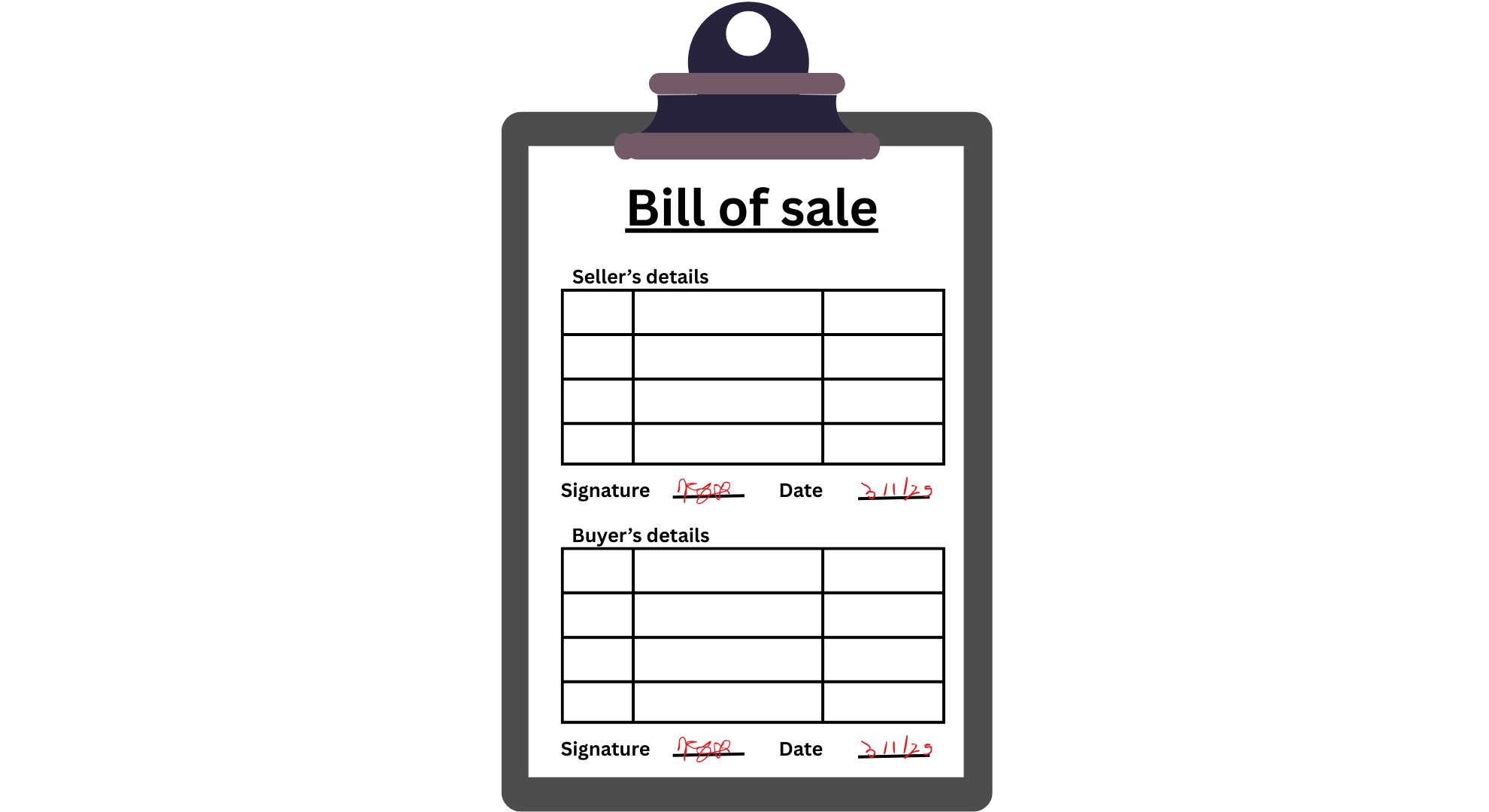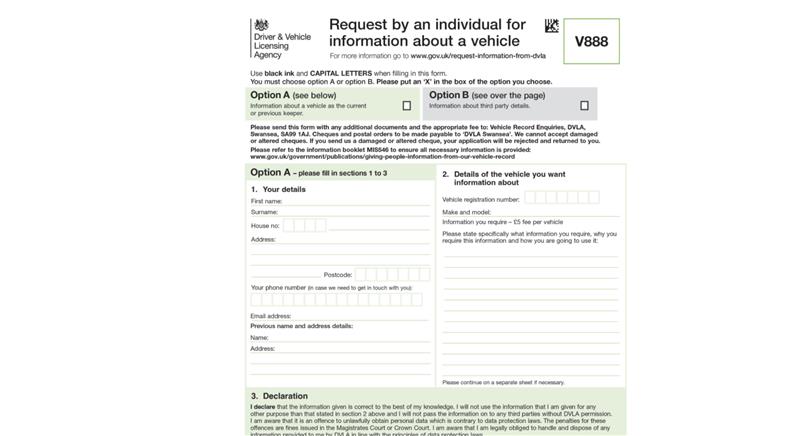There is often confusion around what it means to be the registered keeper or owner of a car.
Each title carries a different set of legal obligations and responsibilities. If you’re planning to buy, receive, or sell a car, it’s important to understand both clearly.
In this guide, we’ll clearly define the terms ‘registered keeper’ and ‘owner’ - and clarify their key differences.
We’ll also explain what constitutes proof of ownership for a car and why it’s so important to retain this documentation. Finally, we’ll guide you through the processes for changing your car’s registered keeper.
Get a free valuation
What’s the difference between the registered keeper and the owner?
Although the registered keeper and owner are often the same person, this isn’t always the case, as they serve different roles.
The registered keeper is the primary user of the car, and the person named in the V5C logbook. They are responsible for the car’s daily use, making sure it is taxed, insured, and MOT certified, and handling any fines or enforcement notices.
The legal owner is the person or entity that has paid for the vehicle or received it as a gift. If a car is leased or under finance, the finance company remains the legal owner, while the agreement holder is the registered keeper.
In short, the legal owner is the person that holds financial control over the vehicle. They are the only person that can authorise transactions such as selling, transferring, or scrapping the car.

The new and old style V5C documents.
Who is the registered keeper of a car?
The registered keeper of a car in the UK is defined as ‘the person who is responsible for the vehicle and has the right to use it’.
They can be either the owner or hirer of the car, depending on the circumstances in which they are using it. The most common situation where this applies is when someone buys a car from a seller – and they then become its official keeper.
The registered keeper’s key responsibilities include:
- Making sure the car is roadworthy and facilitating repairs and maintenance.
- Obtaining an annual MOT certificate once the car is over three years old.
- Making annual road tax payments.
- Arranging appropriate insurance coverage.
- Handling any parking and traffic enforcement notices for the car.
Who is the legal owner of a car?
The legal owner of a car is the person who paid for it, or had the vehicle gifted to them.
The owner is the person who holds legal financial responsibility for the car. Their key responsibilities include:
- Handling any transactions related to the vehicle and its ownership.
- Giving authorisation for the car to be sold, transferred to a new owner, or scrapped.
- Maintaining ownership paperwork and the documents needed to sell the car.
- Ensuring sure any changes in circumstances and details are reflected in the paperwork - and keeping all documentation up to date.
- Ensuring that all drivers are competent, fully licenced, and appropriately insured.
Examples of a registered keeper and owner
- If you buy a car outright and are the primary user of the vehicle named in the V5C logbook, then you are both the owner and the registered keeper.
- If you bought a car on finance but have not yet paid off the loan in full, the finance company will be the legal owner of the vehicle, but you will be named as the registered keeper in the V5C logbook.
- If you lease a car through a Personal Contract Hire (PCH) plan, you will be the registered keeper, but you will not be the legal owner, as you’ll be expected to hand back the car at the end of the term.
- A parent may purchase a car for their child once they reach legal driving age. In this case, the parent is the owner (even if they don’t drive the car themselves), while their child is the registered keeper.
- When a business operates a company car scheme, the employer is the owner while the employee driving the company car is the registered keeper. So, the employee is free to drive the vehicle (and must maintain its insurance compliance), while the employer is the one with the legal rights and responsibilities.
What counts as proof of ownership for a car?
It’s important to note that while the V5C logbook names the registered keeper of a car, it does not prove ownership, as the registered keeper and owner of a car is not always the same person.
The following documents can be considered legal proof of ownership for cars in the UK:
Bill of sale
A bill of sale for a car is a document that legally records its sale and the transfer of ownership from seller to buyer.
It includes details of the transaction, including the date of the sale, the parties involved, vehicle specifications, and the agreed sale price.
As such, a bill of sale can be used to prove car ownership.
Financing agreements
If you buy a car through a finance agreement, you’ll be named as the registered keeper in the V5C logbook, but the lender will remain the legal owner until the loan has been paid in full.
While the finance agreement document serves as proof of ownership, you cannot legally sell or transfer the car until any outstanding finance has been settled, as you do not yet own the car.
It is possible to sell a car with outstanding finance to webuyanycar or a car dealer. You just need to contact the lender to obtain a settlement letter. The car buying service or dealer can then settle the balance on your behalf.
However, it’s important to be aware that it’s illegal to sell a car privately with outstanding finance.

A bill of sale can be used as proof of ownership.
How do I provide proof of ownership?
You can prove ownership by producing a purchase invoice or proof of payment. This document should contain details of the transaction, such as the parties involved, the vehicle registration and specifications, and the sale price.
Selling to webuyanycar without a purchase invoice
We appreciate that the legal owner of a vehicle may not always have a purchase invoice or proof of payment.
If you want to sell your car to us but don’t have a proof of purchase, please contact our Customer Service team by emailing talktousnow@webuyanycar.com.
Why is proof of ownership important?
Proof of ownership indicates who a car legally belongs to.
It also establishes your legal right to manage insurance and tax obligations, resolve any fines and other legal concerns.
If you are selling a car on behalf of someone else, seeing proof of ownership, along with identification for you and the seller can instil buyers with confidence.
In short, having valid proof of ownership helps to reassure them about the legitimacy of the transaction and your right to sell the vehicle.
Establishing proof of ownership when buying a car
-
Request proof of ownership. Only the owner can give authorisation for the vehicle to be sold. Request to see the bill of sale along with a form of identification (e.g. passport or driving licence).
-
Check that the names on both documents match to verify that the seller is the rightful owner of the car.
-
If the seller is acting on behalf of someone else, ask them to produce a signed letter of intent from the owner, authorising them to sell the vehicle, along with photo ID for the owner, and themselves.
-
Check the details in the V5C logbook: The registration and vehicle details should match the car you’re viewing. If the owner and registered keeper are the same person, this should be the person named in the V5C logbook.
-
Run a HPI check on the vehicle. The report will reveal crucial information such as whether the car has been reported stolen, has outstanding finance or loan agreements (liens) against it, or has been recorded as scrapped.
This can help you determine whether the sale is legitimate. A HPI report will also tell you the number of previous owners which can help you build a clearer picture of the car’s history.
How can I find out the registered keeper of a vehicle?
You can request details of a vehicle’s registered keeper from the DVLA by completing a V888 form.
However, the DVLA will only release details about the registered keeper of a vehicle if you have ‘reasonable cause’ to request them (e.g. if you need to find out who was responsible for an accident or trace the registered keeper of an abandoned vehicle).
You should never submit a V888 form with a false reason for your information request. Before submitting the form, you are asked to sign a declaration of accurate information at the bottom of the form, which is a legal declaration that you have answered accurately.

You can download a V888 form from the GOV.UK website.
Can I insure a car if I'm not the legal owner?
It is possible to insure a car that you don’t own. However, you must inform your insurer that you are not the vehicle’s owner or registered keeper when applying.
The type of insurance you’ll need depends on why and how you plan to use the vehicle:
- If it's for personal use, then you will usually need a standard form of car insurance such as third-party only or fully comprehensive.
- If the car is being used commercially, a specialist business motor insurance policy may be needed.
How can I change the registered keeper of my car?
When you intend to change the registered keeper of your car, you’ll need to notify the DVLA. The process to follow can vary slightly, depending on whether you wish to change the registered keeper to a private individual or a car dealer.
We’ll outline how to complete these transfers online below. (This is the quickest and simplest method.)
It’s also possible to transfer by post, although this takes longer. Please visit our guide to transferring car ownership to learn more.
Important: If you want to keep your private reg, you’ll need to obtain a V788 number plate retention certificate before changing the registered keeper.
Changing the registered keeper to a private individual
If your car is changing hands following a private sale (or you are gifting it to someone), here is the process to follow:
-
Visit the 'Tell the DVLA you've sold, transferred or bought a vehicle' page on the GOV.UK website.
-
Click ‘Start now’.
-
Select 'No' for question 1.
-
Select 'Sold it' or ‘Put it into someone else name’ (whichever applies) for question 2.
-
Select ‘Sold it privately to a person or business’ for question 3.
-
Detach the green ‘new keeper slip’ from your V5C logbook and give it to the new registered keeper.
-
Click ‘Tell DVLA’.
-
In the next section, enter the vehicle’s registration number – and the 11-digit reference number from the V5C logbook. You can also choose whether to receive an email confirmation of the sale.
-
Select ‘Private individual’ for the last question – and click ‘Continue’.
-
From here, you’ll be asked to provide some key details for the buyer or recipient, including their name, driving licence number (optional), home address (optional), postcode, and email address (optional).
-
Enter the date of the sale and the vehicle’s mileage (optional).
-
Review the information, ensuring it is correct. Check the boxes confirming that you understand you’ll lose the rights to the registration and you have the party’s consent to notify the DVLA.
-
Click ‘Confirm sale’.

You can tell the DVLA that you've sold your car via the GOV.UK website.
Changing the registered keeper to a car dealer
-
Visit the 'Tell the DVLA you've sold, transferred or bought a vehicle' page on the GOV.UK website.
-
Click ‘Start now’.
-
Select ‘No’ for question 1.
-
Select ‘Sold it’ for question 2.
-
Select ‘Sold it privately to a person or business’ for question 3.
-
Detach the green ‘new keeper slip’ from your V5C logbook and give it to the dealer.
-
Enter the registration number and the 11-digit reference number in your V5C logbook.
-
You can also choose whether to receive an email confirmation of the sale.
-
Select ‘Business’ for the last question – and click ‘Continue’.
-
Enter the dealer’s name and postcode – and select their address from the drop-down menu. You can also enter their email address to send them a confirmation.
-
Enter the date of the sale and the vehicle’s mileage (optional).
-
Review the information, ensuring it is correct. Check the boxes confirming that you understand you’ll lose the rights to the registration and you have the party’s consent to notify the DVLA.
-
Click 'Confirm sale'.
Frequently Asked Questions
Yes. Although it is beneficial to have proof of ownership (such as a bill of sale) when selling a car, this is not a legal requirement.
It’s not unusual for cars to be sold without proof of ownership. However, this documentation can reassure prospective buyers that the sale is legitimate.
When you take out a loan or finance package to buy a car, the lender will become the legal owner of the vehicle until you have made all the necessary payments and ownership is transferred to you.
So, if there are any issues with the payments for your loan, then technically speaking, the lender could repossess your car. However, most lenders will only do this when all other options are exhausted.
Yes, you can trace the owner of a car by registration number.
This involves completing a V888 form and sending it to the DVLA by post. You’ll need to provide ‘reasonable cause’ for your information request, such as requiring these details for legal reasons.
If your request is successful, you should receive the information within four weeks.
To change ownership, visit the ‘Tell the DVLA you’ve sold, transferred or bought a vehicle’ page on the GOV.UK website and follow the instructions on screen.
You’ll need the 11-digit reference document from your V5C logbook to complete the process.
When you sell or gift your car to someone else, you should transfer ownership immediately.
Otherwise, you could be held liable for any motoring fines or penalties accrued by the new owner. You could also be fined up to £1,000 for failing to tell the DVLA that you no longer own the vehicle.


